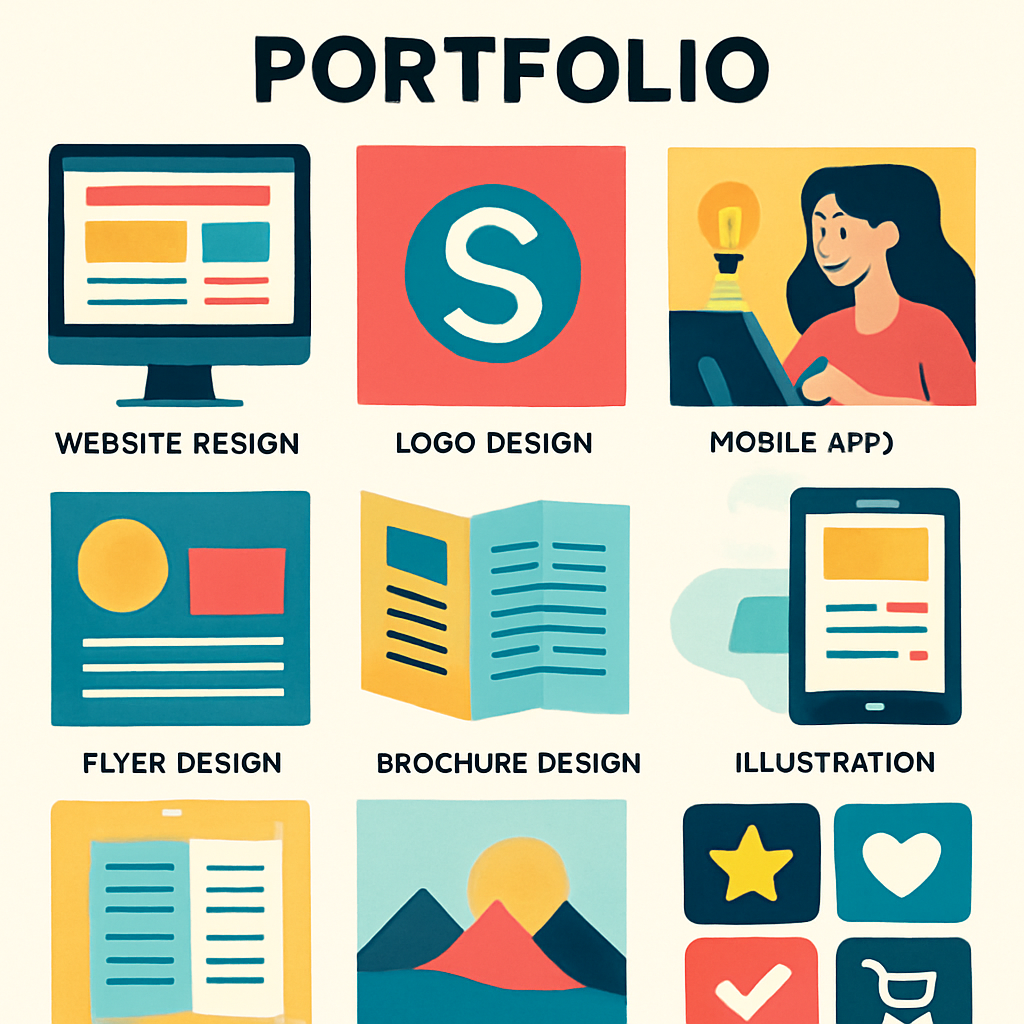Venturing into the world of freelancing might seem daunting, especially if you’re starting with no prior experience. However, with the right approach and mindset, you can set yourself up for a successful freelancing career. This guide will walk you through the essential steps to kickstart your journey into freelancing, even if you’re a complete beginner.
Freelancing involves offering your services to clients on a project basis rather than being tied to a single employer. This flexibility allows you to work on various projects and with different clients, often from the comfort of your home. Many fields offer freelancing opportunities, including writing, graphic design, programming, and digital marketing.
The Freelancing Lifestyle
The freelancing lifestyle offers unparalleled flexibility, allowing you to set your hours and work from virtually anywhere. This independence can be incredibly liberating, but it also requires discipline and self-motivation. Balancing work and personal life is crucial to prevent burnout, especially when your home becomes your office.
Types of Freelancing Work
There are numerous types of freelancing work available, from short-term gigs to long-term projects. Some freelancers choose to specialize in a niche area, while others prefer a more varied portfolio. Understanding the types of work available can help you decide where to focus your efforts initially.
Pros and Cons of Freelancing
While freelancing offers freedom and flexibility, it also comes with its challenges. Without a steady paycheck, income can be unpredictable, and freelancers must handle their taxes and benefits. Understanding these pros and cons will help you prepare for the realities of freelancing life.
Identifying Your Skills
Even if you feel inexperienced, you likely possess skills that can be monetized. Start by listing any skills you have, whether they’re related to previous jobs, hobbies, or volunteer work. Think about tasks you enjoy and are good at, such as writing, designing, organizing, or coding.
Assessing Your Existing Skills
Take stock of your current skills by conducting a self-assessment. Reflect on past jobs, projects, or volunteer work where you excelled. Identify patterns in your abilities and interests to determine which skills are most marketable in the freelancing world.
Developing New Skills
If you find gaps in your skills, consider taking online courses or workshops to develop new abilities. Platforms like Coursera, Udemy, and Skillshare offer courses on a wide range of topics, allowing you to learn at your own pace. Expanding your skill set can open new opportunities in the freelancing market.
Leveraging Transferable Skills
Transferable skills are abilities that can be applied across various jobs and industries. These might include communication, problem-solving, or time management. Highlight these skills in your freelancing profile to attract potential clients. Tailoring your skills to meet client needs can differentiate you from competitors.
Building a Portfolio
A portfolio showcases your skills and previous work to potential clients. If you don’t have professional experience, consider creating sample work. For instance, if you’re a writer, write articles on topics of interest. Designers can create mock designs for fictional companies. This will demonstrate your abilities and give clients a taste of what you can offer.
Creating a Compelling Portfolio
When building your portfolio, focus on quality over quantity. Select your best work that showcases a range of skills and expertise. Ensure that your portfolio is visually appealing, organized, and easy to navigate to make a positive impression on potential clients.
Using Online Platforms
There are several platforms where you can create and share your portfolio for free. Websites like Behance for designers or Medium for writers can help you showcase your work to a broader audience. These platforms also offer networking opportunities, allowing you to connect with potential clients and collaborators.
Continuously Updating Your Portfolio
As you gain more experience, update your portfolio regularly to reflect your latest work. Remove outdated projects and replace them with recent accomplishments to keep your portfolio fresh and relevant. A well-maintained portfolio demonstrates your growth and commitment to your craft.
Finding Freelancing Jobs for Beginners
Finding your first job is a critical step in your freelancing journey. Here are some of the best freelancing sites for beginners:
Popular Freelancing Websites
- Upwork: One of the largest platforms, offering a wide range of jobs. Beginners can find entry-level gigs and build their profiles. Take advantage of Upwork’s resources and community to learn about best practices and client expectations.
- Fiverr: Allows freelancers to offer services, known as “gigs,” starting at $5. It’s an excellent platform for beginners to gain experience. Focus on creating unique and appealing gigs to attract buyers and stand out from the competition.
- Freelancer: Offers a variety of projects across different categories. You can bid on projects that match your skills. Be proactive in applying to jobs and tailor your bids to align with client needs and project specifications.
Niche Job Boards
Consider looking for freelance work on niche job boards related to your field. For example, writers can check out ProBlogger, while tech professionals might explore GitHub Jobs. These specialized boards often feature more targeted opportunities, allowing you to connect with clients seeking your specific expertise.
Networking and Word of Mouth
Building a network can be invaluable in finding freelance jobs. Attend industry events, join online communities, and connect with fellow freelancers. Word of mouth from satisfied clients can also lead to new opportunities and help you establish a reliable client base.
Setting Your Rates
Determining your rates can be tricky. As a beginner, you might want to start with lower rates to attract clients, but ensure you gradually increase them as you gain experience and build a reputation.
Understanding Market Rates
Research what other freelancers in your field and experience level are charging. This will give you a baseline to set competitive rates without undervaluing your work. Consider factors like project complexity, duration, and client budget when determining your rates.
Communicating Your Value
When setting your rates, be prepared to communicate your value to potential clients. Highlight your skills, experience, and the benefits you bring to a project. Confidence in your abilities can justify your rates and encourage clients to invest in your services.
Adjusting Rates Over Time
As you gain experience and build a strong portfolio, gradually increase your rates to reflect your growing expertise. Reassess your rates periodically to ensure they align with industry standards and your evolving skill set. Transparency with clients about rate adjustments fosters trust and long-term relationships.
Crafting a Winning Proposal
When applying for jobs, your proposal is your chance to make a great first impression. Tailor each proposal to the job description, highlighting how your skills and experience make you the ideal candidate.
Key Elements of a Proposal
- Introduction: Briefly introduce yourself and express your interest in the project. Make a personal connection with the client to establish rapport.
- Experience and Skills: Highlight relevant skills and past work. Provide examples that demonstrate your ability to meet the project’s requirements.
- Approach: Outline how you plan to tackle the project. Include timelines, deliverables, and any unique strategies you propose to ensure success.
- Call to Action: Encourage the client to contact you for further discussion. Offer to provide additional information or answer any questions they may have.
Tailoring Proposals for Different Clients
Customize each proposal to align with the specific needs and preferences of the client. Research the client’s industry and previous projects to demonstrate your understanding and commitment. Personalization shows clients that you have taken the time to consider their unique requirements.
Following Up on Proposals
After submitting a proposal, follow up with the client to express your continued interest. A polite follow-up can keep you top of mind and demonstrate your eagerness to work on the project. Persistence and professionalism can help secure more freelance opportunities.
Building Client Relationships
by Resume Genius (https://unsplash.com/@resumegenius)
Once you start getting projects, focus on building strong relationships with your clients. Deliver high-quality work on time, communicate effectively, and be open to feedback. Satisfied clients are more likely to hire you again and refer you to others.
Effective Communication with Clients
Maintain clear and consistent communication with your clients throughout the project. Set expectations, provide regular updates, and be responsive to questions and concerns. Strong communication fosters trust and ensures a smooth working relationship.
Exceeding Client Expectations
Go above and beyond to exceed client expectations by delivering exceptional work. Pay attention to details, meet deadlines, and be proactive in addressing any challenges. Exceeding expectations can lead to repeat business and positive referrals.
Gathering Testimonials
Request testimonials from clients after completing projects. Positive reviews can significantly enhance your profile and attract more clients. Display testimonials prominently in your portfolio and online profiles to build credibility and trust with potential clients.
Continuous Learning and Improvement
Freelancing is a dynamic field, and staying updated with the latest trends and skills is crucial. Invest in online courses, attend webinars, and join freelancing communities to continue learning and growing.
Embracing New Technologies
Stay informed about new technologies and tools relevant to your field. Embracing innovations can enhance your efficiency and the quality of your work. Clients appreciate freelancers who are knowledgeable and up-to-date with the latest industry advancements.
Seeking Feedback and Self-Reflection
Regularly seek feedback from clients and peers to identify areas for improvement. Self-reflection on completed projects can help you learn from successes and challenges. Continuous improvement positions you as a dedicated and evolving professional.
Networking with Other Freelancers
Connecting with other freelancers can provide support, advice, and potential collaboration opportunities. Consider joining online forums or local meetups to expand your network. Sharing experiences and insights with peers can offer valuable perspectives and encourage professional growth.
Conclusion
Starting a freelancing career with no experience may seem challenging, but with determination and the right strategies, you can build a successful path. Identify your skills, build a strong portfolio, and continuously improve your craft. Remember, every expert was once a beginner. Embrace the journey, and over time, you’ll find your niche in the freelancing world.
By following these steps, you’ll be well on your way to landing freelancing jobs for beginners and establishing yourself as a credible professional in your chosen field.






